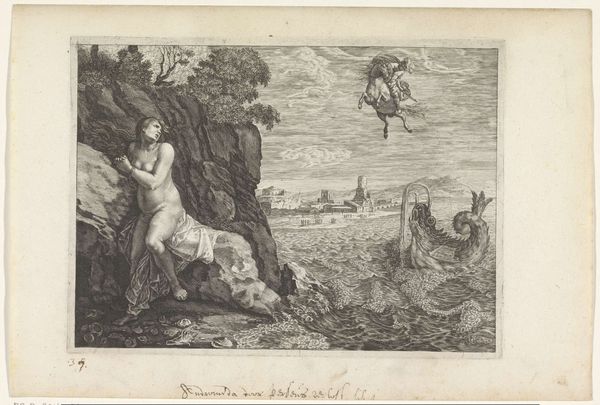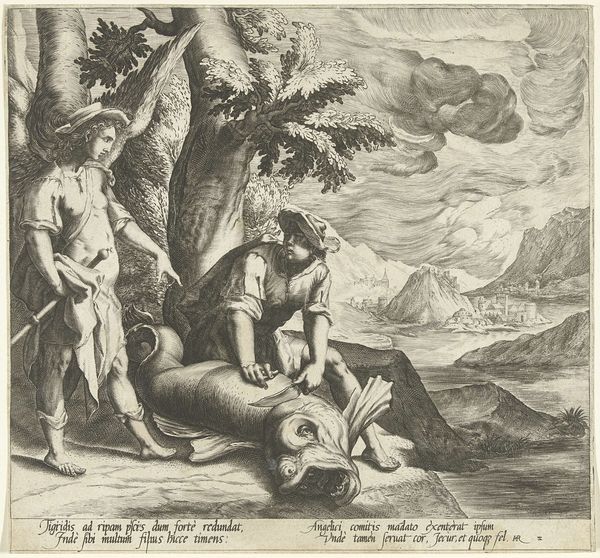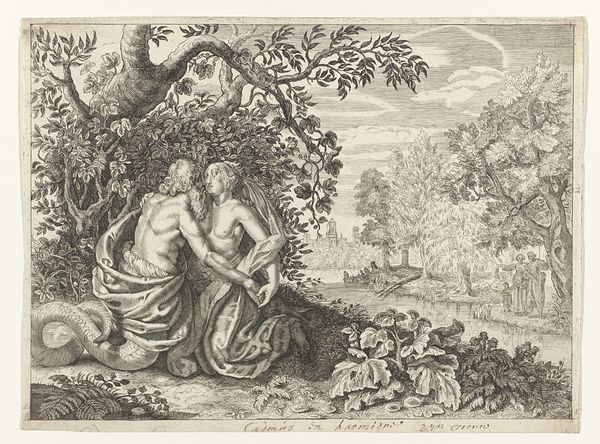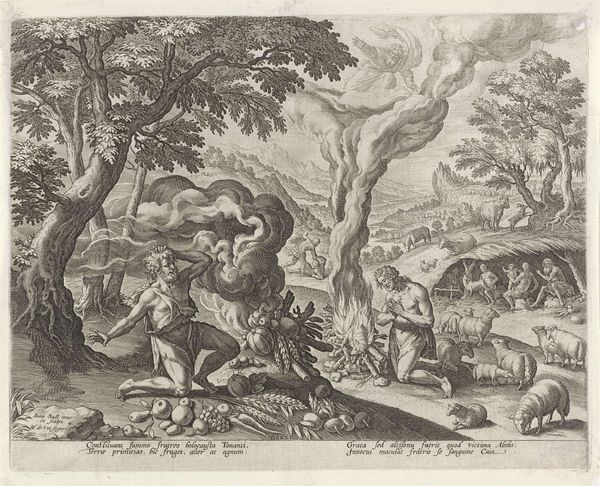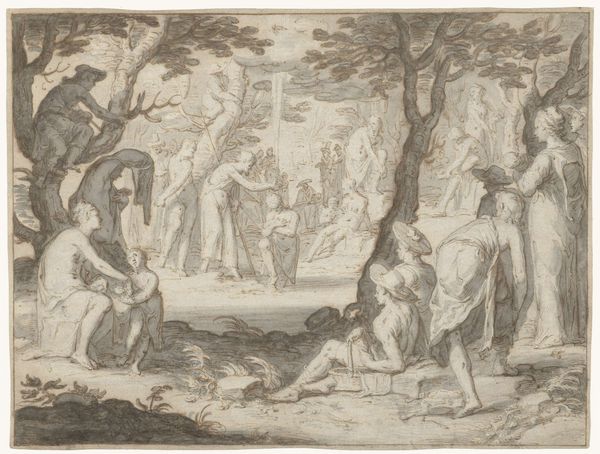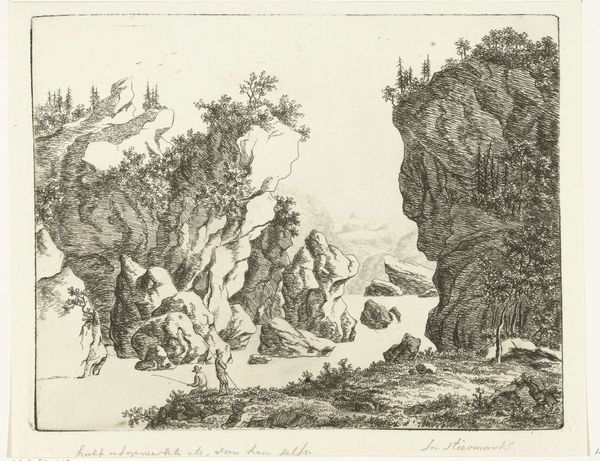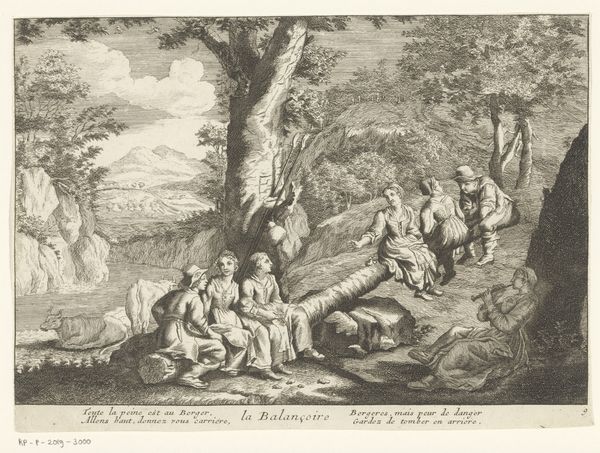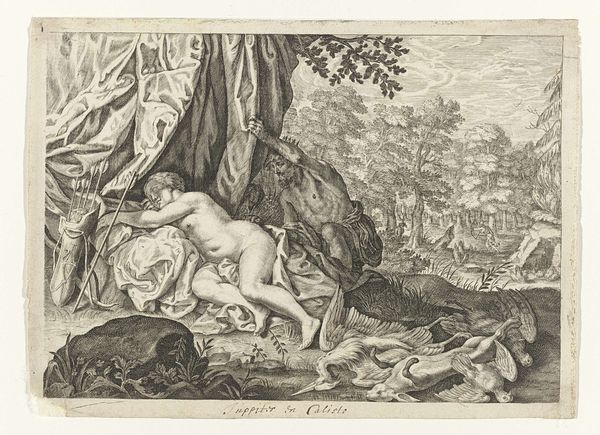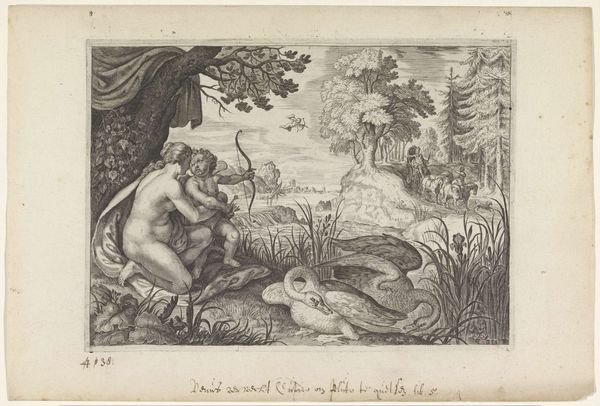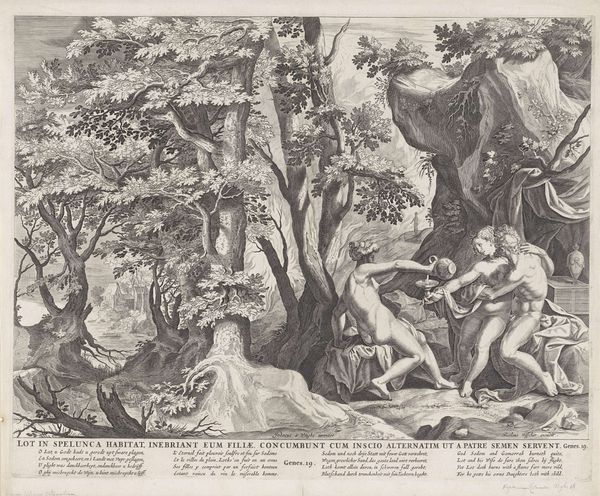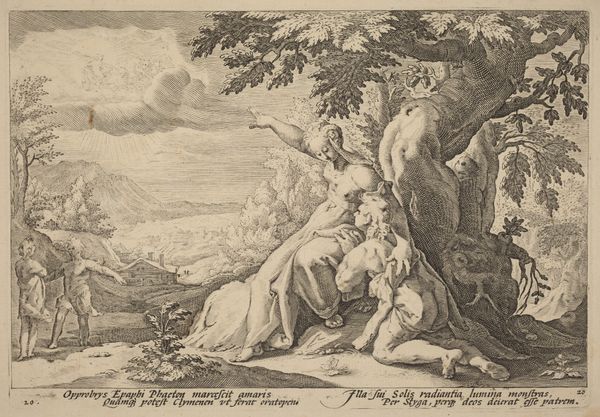
engraving
#
allegory
#
baroque
#
dutch-golden-age
#
landscape
#
figuration
#
engraving
Dimensions: height 165 mm, width 219 mm
Copyright: Rijks Museum: Open Domain
Editor: So, here we have "Jupiter en de koe," an engraving from the Dutch Golden Age, likely dating between 1636 and 1670. It looks pastoral at first glance, but there's a distinct air of... intrigue. What do you see in this piece, considering the historical and cultural context? Curator: It’s interesting how the pastoral masks a narrative of power and transformation, isn't it? The figure of Jupiter, with his eagle, contrasts with the vulnerability of the cow, which is Io, transformed to hide her from Juno's jealousy. Consider the politics of visibility and invisibility inherent in the myth – the woman hidden, objectified, and silenced. How does this imagery reflect societal attitudes toward women during the Dutch Golden Age? Editor: That's a powerful point. It's not just a harmless landscape; it's a depiction of patriarchal power dynamics, even violence, cloaked in allegory. Curator: Exactly. And look at how the landscape itself becomes a stage for this drama. The dense woods offer both shelter and concealment, mirroring the duplicity of Jupiter's actions. Can we see parallels between the act of transforming Io and the ways women's identities were transformed or suppressed in 17th-century Dutch society? Editor: It makes you wonder about the artist's perspective too. Were they complicit in reinforcing these power structures, or subtly critiquing them through their art? Curator: Precisely. Artists rarely operate in a vacuum. Their choices reflect, reinforce, or resist the dominant ideologies of their time. Exploring these engravings, we must actively question the embedded social commentaries within them, revealing the gendered and political implications that were often left unsaid. Editor: That makes me see it in a totally different way now. It's more than just a mythological scene, it's a snapshot of a power imbalance. Curator: Absolutely. Art offers a lens to examine the complexities and inequalities woven into the fabric of history, if only we are willing to look critically.
Comments
No comments
Be the first to comment and join the conversation on the ultimate creative platform.
